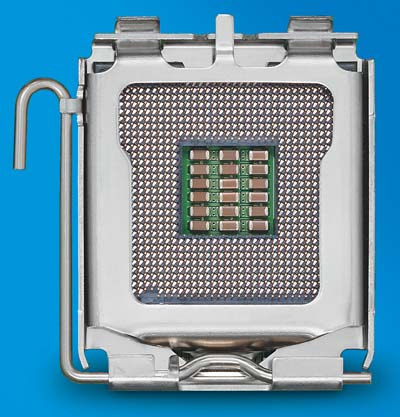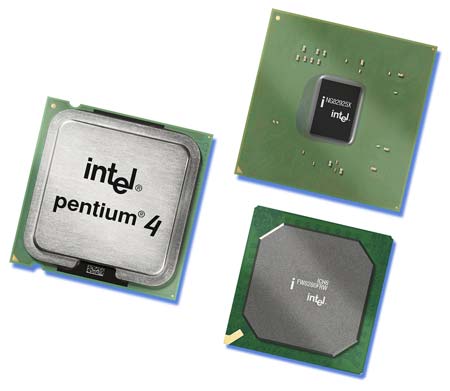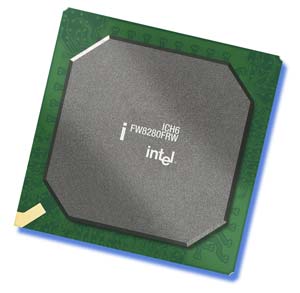Intel 925X/915: Chipset Performance & DDR2
by Wesley Fink on June 19, 2004 3:01 AM EST- Posted in
- CPUs
Intel Socket 775 Chipsets
You're looking at the new 775-pin socket T, which reverses the Socket 478 by putting the pins in the socket on the motherboard. The 775 processor has no pins at all; it has 775 small 'cups' that make contact with the pins in the socket.
The new chipsets for Socket 775 range from the 925X at the top to a full range of mainstream 915 chipsets, both with and without the new Intel Integrated DirectX 9 graphics.

The 915/925X are updates to the current 865/875 chipsets, which will continue in the Intel line for the time being.
All of the new 775 chipsets are paired with the updated ICH6 Southbridge. The ICH6 integrates the new 24-bit 192kHz High-Definition Audio. Intel HD audio also features eight independent DMA audio engines. This can enable multiple separate, simultaneous audio streams.

The new Southbridge also supports four SATA ports, which double the available SATA ports from ICH5. The new SATA ports can support either hard drives or optical devices with hot plug capabilities and Native Command Queuing (NCQ). While the SATA support is still SATA 1 (150MB/s), Intel claims that the new NCQ feature allows faster boots and increases file transfer speeds.
As we first saw on 875/865 family, there is also an ICH6R that can be paired with the new Northbridge chips to provide Intel Matrix RAID capabilities. The new Matrix Raid supports RAID 0, 1, 0+1, and an interesting option that allows combining both mirroring for security and striping for speed using only two drives.
New for 925X/915 is a new "W" Southbridge for ICH6 that supports Intel Wireless Connect Technology. This is designed to simplify wireless networks and connections. The W option is available with the regular Southbridge as ICH6W, and with the Matrix RAID version, ICH6RW. Consider the "W" in ICH6W and ICH6RW a future feature, however, because Intel does not yet have the wireless feature working. The accessory cards for wireless are not available at launch either.
The new Intel chipsets only support one IDE controller, so two IDE devices on the same channel is the only option for IDE. With SATA optical drives only just starting to appear, that means your IDE hard drive and optical IDE device will have to share a single channel. Even if you have SATA drives, your two IDE optical devices will have to share a single IDE channel. It is abundantly clear that Intel is trying to accelerate the move to SATA by limiting IDE options on the new chipsets.










57 Comments
View All Comments
Neekotin - Saturday, June 19, 2004 - link
guess i'll be keeping my system for another 1 year.. hehehe ;). just gonna buy me a new GPU!Degrador - Saturday, June 19, 2004 - link
Well this has just confirmed my plan for an athlon 64 next - I can't see any reason to be looking towards intel, either now or in the near future (next 6 months).WileCoyote - Saturday, June 19, 2004 - link
baby steps...mkruer - Saturday, June 19, 2004 - link
Actually now that I think of Intel might be correct. The chipset may be up to 15% faster, its just that Prescott is up to 15% slower.wicktron - Saturday, June 19, 2004 - link
zzzzzzmkruer - Saturday, June 19, 2004 - link
The moral of this story, buy AMD instead.Falloutboy525 - Saturday, June 19, 2004 - link
now it makes sence as to why amd isn't even bothering wth ddr2 till it speeds up